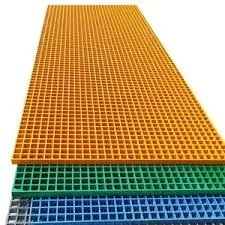
-
 Afrikaans
Afrikaans -
 Albanian
Albanian -
 Amharic
Amharic -
 Arabic
Arabic -
 Armenian
Armenian -
 Azerbaijani
Azerbaijani -
 Basque
Basque -
 Belarusian
Belarusian -
 Bengali
Bengali -
 Bosnian
Bosnian -
 Bulgarian
Bulgarian -
 Catalan
Catalan -
 Cebuano
Cebuano -
 China
China -
 China (Taiwan)
China (Taiwan) -
 Corsican
Corsican -
 Croatian
Croatian -
 Czech
Czech -
 Danish
Danish -
 Dutch
Dutch -
 English
English -
 Esperanto
Esperanto -
 Estonian
Estonian -
 Finnish
Finnish -
 French
French -
 Frisian
Frisian -
 Galician
Galician -
 Georgian
Georgian -
 German
German -
 Greek
Greek -
 Gujarati
Gujarati -
 Haitian Creole
Haitian Creole -
 hausa
hausa -
 hawaiian
hawaiian -
 Hebrew
Hebrew -
 Hindi
Hindi -
 Miao
Miao -
 Hungarian
Hungarian -
 Icelandic
Icelandic -
 igbo
igbo -
 Indonesian
Indonesian -
 irish
irish -
 Italian
Italian -
 Japanese
Japanese -
 Javanese
Javanese -
 Kannada
Kannada -
 kazakh
kazakh -
 Khmer
Khmer -
 Rwandese
Rwandese -
 Korean
Korean -
 Kurdish
Kurdish -
 Kyrgyz
Kyrgyz -
 Lao
Lao -
 Latin
Latin -
 Latvian
Latvian -
 Lithuanian
Lithuanian -
 Luxembourgish
Luxembourgish -
 Macedonian
Macedonian -
 Malgashi
Malgashi -
 Malay
Malay -
 Malayalam
Malayalam -
 Maltese
Maltese -
 Maori
Maori -
 Marathi
Marathi -
 Mongolian
Mongolian -
 Myanmar
Myanmar -
 Nepali
Nepali -
 Norwegian
Norwegian -
 Norwegian
Norwegian -
 Occitan
Occitan -
 Pashto
Pashto -
 Persian
Persian -
 Polish
Polish -
 Portuguese
Portuguese -
 Punjabi
Punjabi -
 Romanian
Romanian -
 Russian
Russian -
 Samoan
Samoan -
 Scottish Gaelic
Scottish Gaelic -
 Serbian
Serbian -
 Sesotho
Sesotho -
 Shona
Shona -
 Sindhi
Sindhi -
 Sinhala
Sinhala -
 Slovak
Slovak -
 Slovenian
Slovenian -
 Somali
Somali -
 Spanish
Spanish -
 Sundanese
Sundanese -
 Swahili
Swahili -
 Swedish
Swedish -
 Tagalog
Tagalog -
 Tajik
Tajik -
 Tamil
Tamil -
 Tatar
Tatar -
 Telugu
Telugu -
 Thai
Thai -
 Turkish
Turkish -
 Turkmen
Turkmen -
 Ukrainian
Ukrainian -
 Urdu
Urdu -
 Uighur
Uighur -
 Uzbek
Uzbek -
 Vietnamese
Vietnamese -
 Welsh
Welsh -
 Bantu
Bantu -
 Yiddish
Yiddish -
 Yoruba
Yoruba -
 Zulu
Zulu
grp rectangular tank
Understanding the GRP Rectangular Tank A Reliable Storage Solution
In various industries, the need for efficient storage solutions has led to the development of innovative tank designs. One such solution is the Glass Reinforced Plastic (GRP) rectangular tank, which has gained popularity for its durability, versatility, and cost-effectiveness. This article will explore the characteristics, benefits, and applications of GRP rectangular tanks.
Characteristics of GRP Rectangular Tanks
GRP rectangular tanks are constructed using a composite material made from glass fibers and polymer resins. This combination provides a strong and lightweight structure resistant to corrosion, making it suitable for various applications. The rectangular shape allows for efficient use of space, making it an ideal choice for places where floor area is limited.
Furthermore, these tanks can be manufactured in a range of sizes and capacities, accommodating different storage needs. The modular design allows for easy installation and integration into existing systems. Their smooth interior surfaces minimize the risk of bacterial growth and facilitate easy cleaning and maintenance.
Benefits of GRP Rectangular Tanks
One of the most significant advantages of GRP rectangular tanks is their exceptional durability. Unlike traditional materials like steel or concrete, GRP does not corrode, ensuring a longer lifespan with minimal maintenance. This durability translates to cost savings over time, as repairs or replacements become less frequent.
Moreover, GRP tanks are lightweight relative to their capacity, allowing for easier handling and installation. This is particularly advantageous in locations with weight restrictions or where traditional tanks may pose logistical challenges. Additionally, the versatility of GRP allows it to withstand extreme temperatures and environmental conditions, making it suitable for both indoor and outdoor use.
grp rectangular tank

Another noteworthy benefit of GRP rectangular tanks is their aesthetic appeal. Unlike traditional materials, GRP can be manufactured in various colors and finishes, allowing for better integration into the surrounding environment. This aspect is essential for businesses that prioritize visual presentation alongside functionality.
Applications of GRP Rectangular Tanks
GRP rectangular tanks are used across diverse industries, proving their adaptability. In the agricultural sector, they serve as effective water storage solutions, ensuring adequate supply for irrigation and livestock. Their resistance to corrosion makes them ideal for chemical storage, particularly for hazardous substances that would otherwise erode traditional containers.
In the food and beverage industry, GRP tanks can be used for water storage, fermentation, and other processing applications. Their non-reactive properties ensure that stored substances remain uncontaminated. Additionally, they are often used in wastewater treatment plants due to their ability to resist chemicals and biofouling.
Furthermore, these tanks are increasingly utilized in the construction industry for rainwater harvesting systems. By promoting sustainable practices, GRP rectangular tanks help conserve water resources and reduce reliance on municipal supplies.
Conclusion
In summary, GRP rectangular tanks represent a modern solution to storage challenges faced by various industries. With their durability, lightweight structure, aesthetic versatility, and diverse applications, they are set to become a cornerstone in the ongoing quest for efficient and reliable storage solutions. As industries continue to evolve, the importance of adopting advanced materials like GRP will only become more pronounced, ensuring safety, longevity, and efficiency in storage practices.









